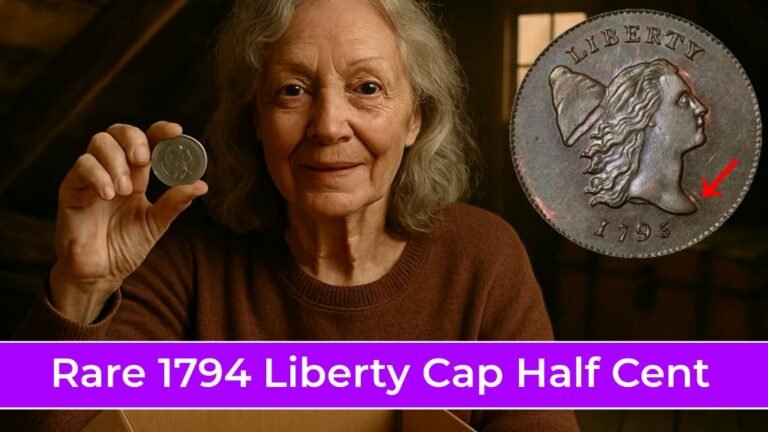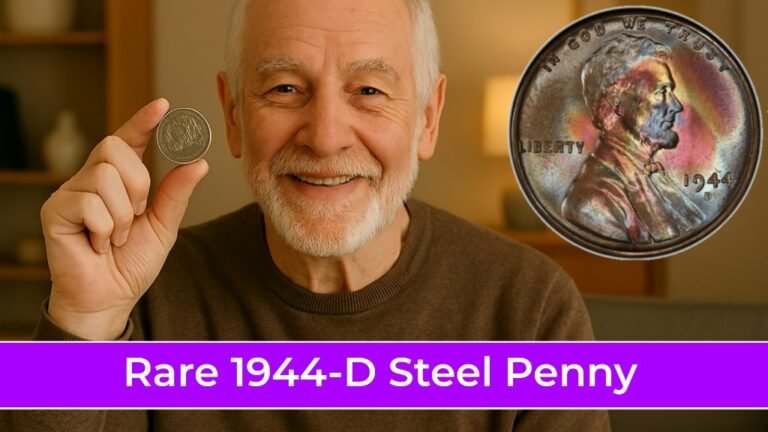Most Valuable Jefferson Nickel Error – One of the most famous and long-lived coins in American history is the Jefferson nickel, which was released in 1938 in memory of President Thomas Jefferson. American circulation of this five-cent piece has remained steady for decades; the obverse features a portrait of Jefferson and the reverse features his residence, Monticello.
Although the majority of Jefferson nickels are merely worth their face value, a small number of error variations have seen tremendous price increases because to factors such as rarity, historical importance, or unusual characteristics. Collectors pay exorbitant prices for these mistakes at auction.
Here we will take a look at the seven most valuable Jefferson nickel mistake variants that any collector worth their salt should be aware of.
1. 1943 Doubled Die Obverse
The 1943 doubled die obverse is among the most infamous mistakes in the Jefferson nickel series. The die alignment on this particular coin went off during manufacture, which led to the noticeable duplication of Jefferson’s likeness and the words “LIBERTY” and “IN GOD WE TRUST.” This mistake is highly sought after by collectors due to its boldness and ease of detection.
Immaculate examples can command over $20,000, while high-quality examples often sell for thousands. Discovering a working example of this would be an extremely valuable and unusual find.
Also read – 9 Rare Capped Bust Dimes Worth Big Money
2. 1955 Doubled Die Reverse
Doubling on the obverse of a coin is more common, but the 1955 Jefferson nickel demonstrates that mistakes on the reverse can be equally valuable. The steps of Monticello and the inscriptions around them clearly show evidence of this mistake as doubling.
Finding one of them is extremely unusual, as there are less than 20 known examples. As one of the most prized Jefferson nickel mistakes, high-quality examples can fetch $10,000 or more.
3. 1964 SMS Special Mint Set Coins
For collectors, the United States Mint released special mint sets (SMS) in 1964 with coins that had finer features and a satiny sheen. Some of the Jefferson nickels included special finishes that aren’t found on the coins in circulation.
What makes some of these nickels even more interesting is that they are of the “no mint mark” variety. Depending on their condition and unique qualities, high-grade 1964 SMS Jefferson nickels can fetch prices between $5,000 and $20,000.
4. 1970 No S Proof Nickel
Collectors’ favorite nickel proof coins are struck with meticulous attention to detail and have surfaces that resemble mirrors. Nevertheless, a handful of Jefferson nickel proofs were produced in 1970 without the customary “S” mintmark that is found above the date. These mistakes were included in the proof sets that were sent out to collectors, despite quality control efforts.
The 1970 No. S Jefferson nickel proof is extremely uncommon, with only around 30 copies known. Collectors that take their hobby seriously must own one, as a high-quality example might fetch $20,000 or perhaps more.
Also read – 9 Rare Nickels That Could Make You Rich Overnight
5. 1971 No S Proof Nickel
Yet another undiscovered treasure is the 1971 No S Jefferson nickel proof, which is a proof error. This coin, like its 1970s analogue, is missing the “S” mintmark because of a manufacturing mistake. Because of its rarity, collectors are willing to pay a premium for one of these coins.
Such a high-quality sample can fetch $10,000 or more, demonstrating that even contemporary coins can be quite valuable due to an extremely rare flaw.
6. 1994 Double Die Reverse
The reverse of the 1994 double-die Fascinatingly, the steps of Monticello and the surrounding inscriptions on the Jefferson nickel display modest but evident doubling. Due to its rarity, this form of twofold dice error is nevertheless highly sought after, even though it isn’t as striking as others.
Several thousand dollars is a common price for high-quality copies, and flawless examples can fetch considerably more money. The relative obscurity and distinctive design of this coin make it highly sought-after by collectors.
7. 2004-D Wisconsin Leaf Varieties
The United States Mint released a set of state quarters in 2004 that included Wisconsin. But there was an unusual occurrence on a few Wisconsin quarters—a little leaf-like form close to the corn ear. Coin collectors may be surprised to hear that a “Wisconsin leaf” type of 2004-D Jefferson nickels has been discovered with identical flaws.
Few instances of these nickels are known to exist, making them exceptionally uncommon. A high-quality specimen is an incredibly valuable asset to any collection, as it can sell for thousands of dollars.
What Makes These Errors So Valuable?
The exceptional worth of these Jefferson nickel mistake variations is due to multiple variables. Their uncommonness is the main point. There were extremely few mintages because many of these mistakes were the consequence of one-off occurrences during manufacture. Their market value is driven up by the constant demand from collectors, thanks to their scarcity.
Additionally, condition is crucial. Inherently rarer than worn-out coins are those that have remained in circulation for decades in nearly flawless condition. The value of coins is directly affected by the numerical grades assigned by professional grading agencies such as PCGS and NGC, which evaluate coins according to their condition.
Last but not least, narrative has immaterial benefits. Errors with intriguing histories, like the 1943 doubled die obverse’s cryptic beginnings or the 1970 No S proof’s inadvertent fabrication, captivate collectors and historians and give them more value than just their metal content.




